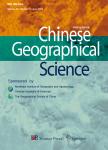Exploring Temporal Activity Patterns of Urban Areas Using Aggregated Network-driven Mobile Phone Data:A Case Study of Wuhu,China
Exploring Temporal Activity Patterns of Urban Areas Using Aggregated Network-driven Mobile Phone Data: A Case Study of Wuhu, China作者机构:School of Architecture and Urban PlanningNanjing UniversityNanjing 210093China Provincial Engineering Laboratory of Smart City Design Simulation&VisualizationNanjing 210046China Pancar Technology Co.Ltd.Nanjing 210049China
出 版 物:《Chinese Geographical Science》 (中国地理科学(英文版))
年 卷 期:2020年第30卷第4期
页 面:695-709页
核心收录:
学科分类:0303[法学-社会学] 08[工学] 081303[工学-城市规划与设计(含:风景园林规划与设计)] 0708[理学-地球物理学] 0804[工学-仪器科学与技术] 080402[工学-测试计量技术及仪器] 0705[理学-地理学] 0813[工学-建筑学] 0704[理学-天文学] 0833[工学-城乡规划学]
基 金:Under the auspices of the National Natural Science Foundation of China(No.41571146) China Postdoctoral Science Foundation(No.2019M651784)。
主 题:mobile phone data human mobility urban travel patterns prefectural-level Chinese city Wuhu
摘 要:The increasing availability of data in the urban context(e.g.,mobile phone,smart card and social media data)allows us to study urban dynamics at much finer temporal resolutions(e.g.,diurnal urban dynamics).Mobile phone data,for instance,are found to be a useful data source for extracting diurnal human mobility patterns and for understanding urban dynamics.While previous studies often use call detail record(CDR)data,this study deploys aggregated network-driven mobile phone data that may reveal human mobility patterns more comprehensively and can mitigate some of the privacy concerns raised by mobile phone data usage.We first propose an analytical framework for characterizing and classifying urban areas based on their temporal activity patterns extracted from mobile phone data.Specifically,urban areas’diurnal spatiotemporal signatures of human mobility patterns are obtained through longitudinal mobile phone data.Urban areas are then classified based on the obtained signatures.The classification provides insights into city planning and development.Using the proposed framework,a case study was implemented in the city of Wuhu,China to understand its urban dynamics.The empirical study suggests that human activities in the city of Wuhu are highly concentrated at the Traffic Analysis Zone(TAZ)level.This large portion of local activities suggests that development and planning strategies that are different from those used by metropolitan Chinese cities should be applied in the city of Wuhu.This article concludes with discussions on several common challenges associated with using network-driven mobile phone data,which should be addressed in future studies.



